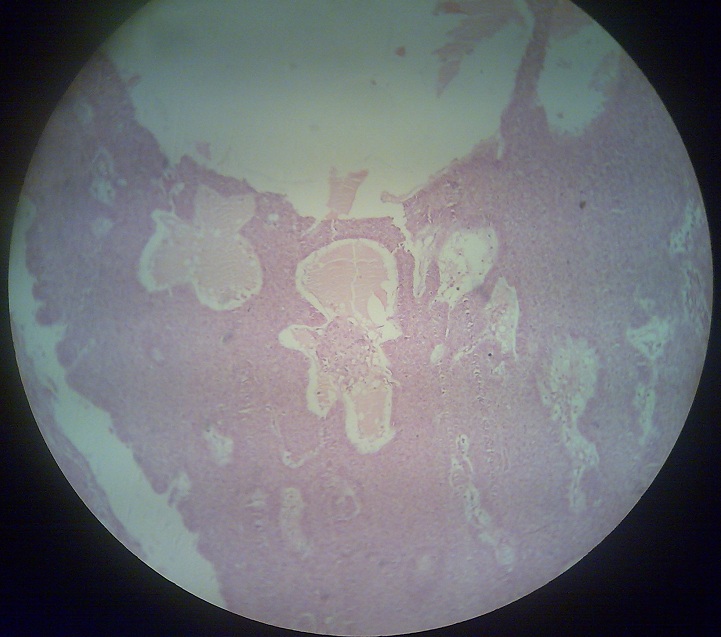Basal cell carcinoma is a slow growing tumor and is the most common tumor with aggressive local invasion. It is common in fair people and is mostly seen on the face.
Risk Factors
- Ultraviolet light which brings about DNA damage.
- Pre malignant conditions e.g. xeroderma pigmentosa
- Chemotherapy
Morphology
Gross
Basal cell carcinoma appears as small, raised papules which may or may not contain pigment. Advanced lesion ulcerates and may invade underlying tissue specially facial sinuses. In this case, it is known as rodent ulcer.
Microscopy
Small and large nests of tumor cells are seen in the dermis. These nests are composed of tumor cells which resemble basal layer of epidermis. Different patterns are seen in basal cell carcinoma:
a. Retraction clefts
Stroma around tumor nest is composed of fibroblast like cells. During tissue fixation, stroma retracts away from tumor nest, thus creating a clear space known as retraction cleft.
Peripheral Palisading
Tumor nests have cells at periphery arranged so that they form peripheral palisading.
Want a clearer concept, also see all images on Basal Cell Carcinoma
 howMed Know Yourself
howMed Know Yourself





